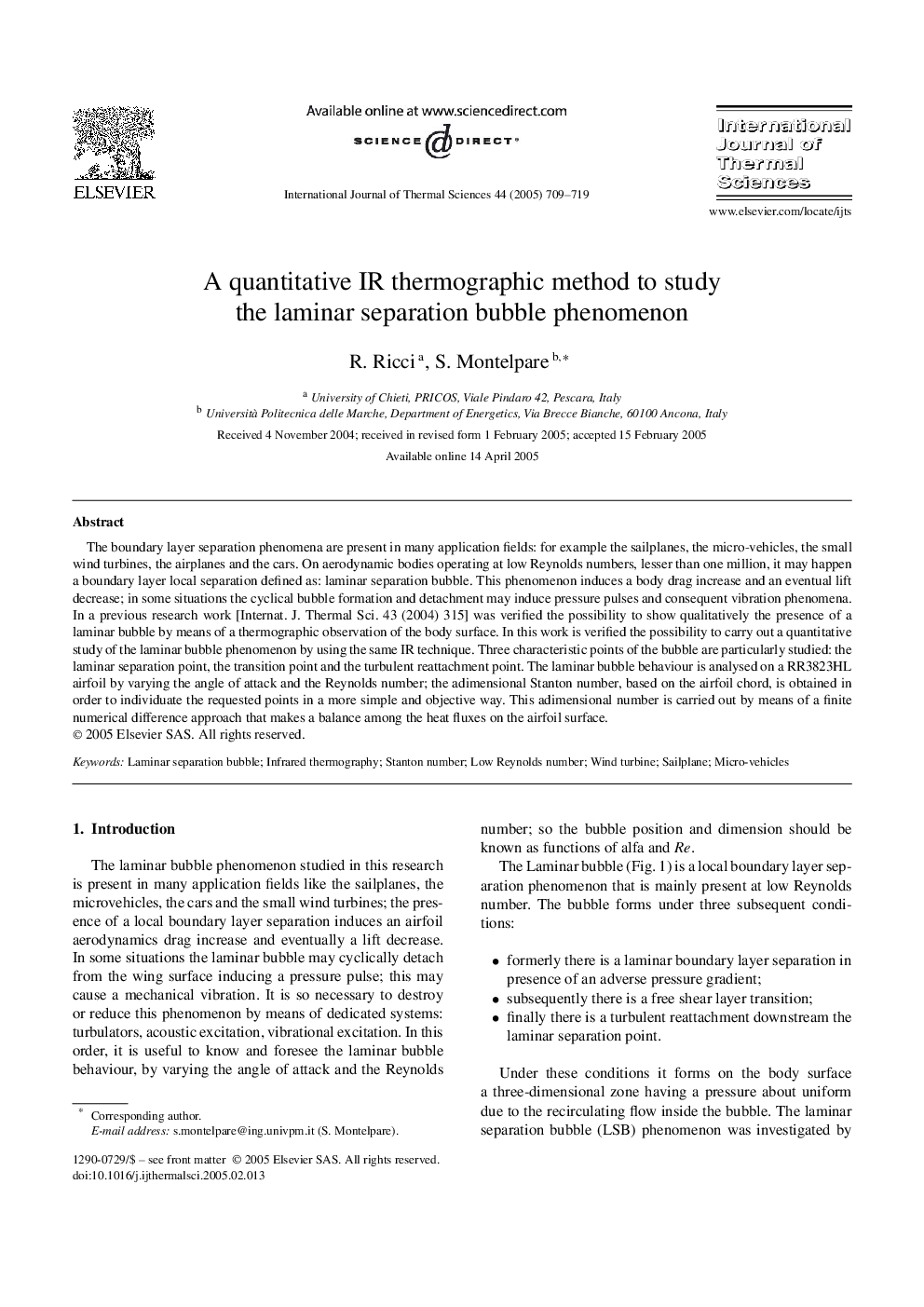| Article ID | Journal | Published Year | Pages | File Type |
|---|---|---|---|---|
| 9692844 | International Journal of Thermal Sciences | 2005 | 11 Pages |
Abstract
The boundary layer separation phenomena are present in many application fields: for example the sailplanes, the micro-vehicles, the small wind turbines, the airplanes and the cars. On aerodynamic bodies operating at low Reynolds numbers, lesser than one million, it may happen a boundary layer local separation defined as: laminar separation bubble. This phenomenon induces a body drag increase and an eventual lift decrease; in some situations the cyclical bubble formation and detachment may induce pressure pulses and consequent vibration phenomena. In a previous research work [Internat. J. Thermal Sci. 43 (2004) 315] was verified the possibility to show qualitatively the presence of a laminar bubble by means of a thermographic observation of the body surface. In this work is verified the possibility to carry out a quantitative study of the laminar bubble phenomenon by using the same IR technique. Three characteristic points of the bubble are particularly studied: the laminar separation point, the transition point and the turbulent reattachment point. The laminar bubble behaviour is analysed on a RR3823HL airfoil by varying the angle of attack and the Reynolds number; the adimensional Stanton number, based on the airfoil chord, is obtained in order to individuate the requested points in a more simple and objective way. This adimensional number is carried out by means of a finite numerical difference approach that makes a balance among the heat fluxes on the airfoil surface.
Keywords
Related Topics
Physical Sciences and Engineering
Chemical Engineering
Fluid Flow and Transfer Processes
Authors
R. Ricci, S. Montelpare,
